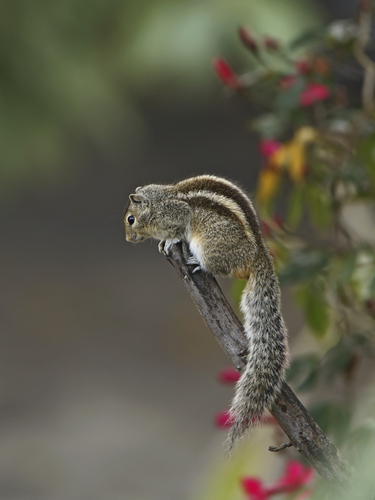
Indian Palm Squirrel
The Indian palm squirrel, with its striking trio of white stripes, scampers across urban landscapes. Agile and omnivorous, it plays a vital role in seed dispersal, showcasing its adaptability and charm amidst bustling human environments.
2-4 years
Lifespan
100.0 - 120.0 g
Weight
Brown, Yellow, Tan
Color
10 mph
Top Speed
Least Concern
Conservation Status
Increasing
Population Trend
Characteristics
The Indian palm squirrel (Funambulus palmarum) is a small rodent native to India and Sri Lanka. It is recognized by its three distinctive white stripes along its back, contrasting with its gray-brown fur. Known for its agility, it thrives in urban and rural areas, feeding on fruits, nuts, and insects.
Distribution Range of the Indian Palm Squirrel
Funambulus palmarum, commonly known as the Indian palm squirrel, is native to the Indian subcontinent. Its distribution primarily includes India and Sri Lanka, with occurrences also reported in Bangladesh and Nepal.
Indian Palm Squirrel's Habitat
Environmental Conditions
The Indian palm squirrel is typically found in a variety of habitats, including tropical and subtropical regions. It thrives in environments with abundant tree cover, such as deciduous and evergreen forests, urban gardens, and plantations. The climate in these regions is generally warm with distinct wet and dry seasons.
Ecological Niche
Funambulus palmarum occupies an arboreal niche, often found in trees and shrubs where it can forage for food. It is highly adaptable, capable of living in urban areas where it utilizes parklands and gardens. The species primarily feeds on fruits, nuts, seeds, and occasionally insects. Its adaptability to human-altered landscapes has allowed it to thrive in areas with dense human populations.
Copyright @ Nature Style Limited. All Rights Reserved.
 English
English